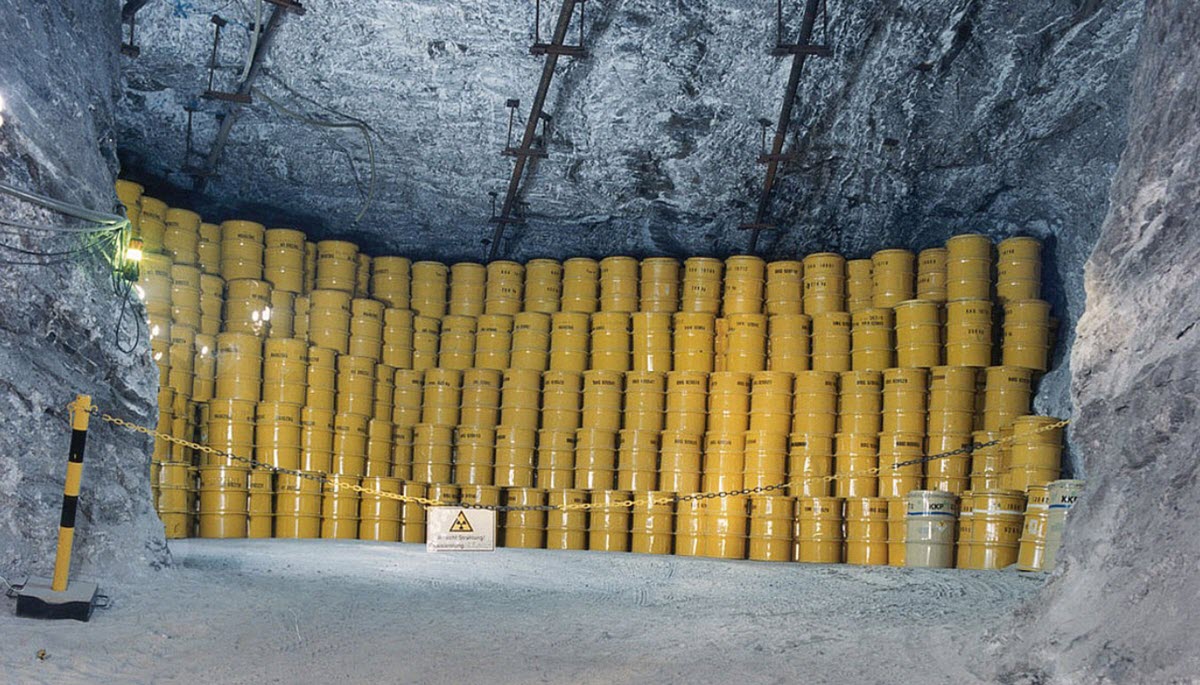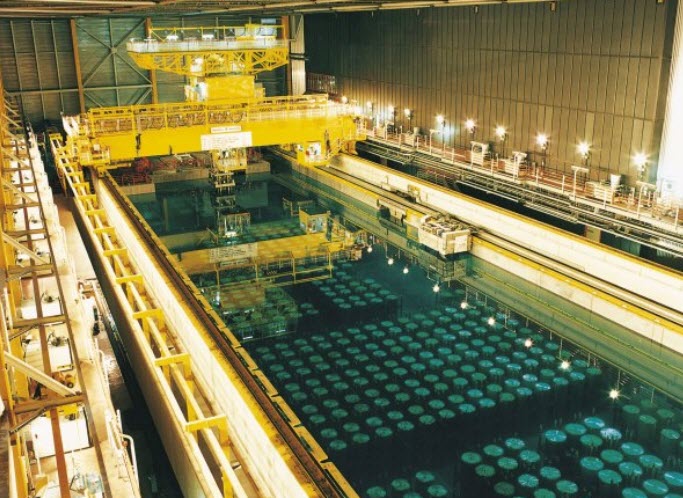
Radioactive waste, especially high-level waste, is hazardous to living organisms. The radioactivity in the waste products will decrease over time, but for some types of waste it will take a very long time before the waste stops being dangerous. Radioactive waste should therefore be isolated and confined to prevent living organisms from being exposed to it.
How long radioactive waste remains dangerous depends largely on the half-life of the element. Cesium-137 and strontium-90 have a half-life of roughly 30 years, which means that after 30 years, roughly 50% of the atoms of the radioactive material will have disintegrated.
For plutonium, twenty radioactive isotopes have been characterized, and their half-life vary dramatically. When discussing long-term management of plutonium isotopes, it is therefore very important to know exactly which isotopes we are talking about. Plutonium-241 does for instance have a half-life of less than 15 years, while it is 88 years for plutonium-238. Plutonium-244 has a half-life that exceeds 80 million years, the half-life for plutonium-242 is more than 373,000 years, and the half-life for plutonium-239 is 24,110 years.
High-level radioactive waste
 Nuclear reactors produce high-level radioactive waste (HLW). One example of HLW are used fuel rods that have been removed from the core. They contain both fission products and transuranic elements, are highly radioactive and tend to be hot.
Nuclear reactors produce high-level radioactive waste (HLW). One example of HLW are used fuel rods that have been removed from the core. They contain both fission products and transuranic elements, are highly radioactive and tend to be hot.
An average 1000-MW nuclear power plant will produce around 27 tonnes of spent nuclear fuel in a year. The waste from spent fuel rods will consists cheifly of cesium-137 and strontium-90, but can also contain plutonium.
Two examples of long-lived fission products from nuclear reactors that are of special concern are Technetium-99 and Iodine-129. After a few thousand years, these two will be the dominating radioactive materials left in the spent fuel rods created today. The half-life for technetium-99 is 220,000 years and the half-life for Iodine-129 is 15.7 million years.
Reprocessing or recycling
Reprocessingor or recycling of spent nucear fuel is possible with current technology. It still generates waste, and is therefore not a total solution, but it can be used to reduce the quantiy of waste that must be put into long-term storage. Many programs for reprocessing or recycling spent nuclear fuel are currently active worldwide.
Methods of disposal
Many different methods of long-term disposal of radioactive waste (especially HLW) have been discussed. Right now, the dominating suggestions are deep geological burial in a mine or in a borehole.
So far, there is no repository available for civilian HLW anywhere in the world; all radioactive waste that is being stored is stored in storage facilities intended for short term or medium term storage. One long-term repository is currently being constructed in western Finland, near the municipality Eurajoki. This is a deep geological repository named Onkalo, excavated in granit bedrock. It is expected to start recieving Finnish HLW in 2020.
In the United States, HLW from several sources is stored in The Morris Operation in Grundy, Illinois, but this storage isn’t intended for long-term keeping of HLW. In this facility, spent nuclear fuel assemblies are kept in a spent fuel storage pool. HLW is also stored at 70 different nuclear power plant sites throughouth the United States, since there is no long-term storage facility available to send it to. The Yucca Mountain Nuclear Waste Repository, approved in 2002, was intended to be a deep geological reposity for HLW within the Yucca Mountain, but federal funding for the project was stopped in 2011 under the Obama Administration.
Various suggested methods of disposal of radioactive waste
- Deep borehole disposal is the concept of disposing HLW in extremely deep boreholes. No country has implemented this, but some experiments have been carried out in the United States. (That program has now been closed due to lack of funding.)
- Ocean disposal. This method was implemented by several countries, but there are now international agreements in place that ban this practise. Examples of countries that practised ocean disposal of HLW before the ban are the United States, Soviet Union / Russia, United Kingdom, Japan, Switzerland, Germany, France, Italy, the Netherlands, South Korea, Belgium, and Sweden.
- Sub seabed disposal. This method was never implemented and it is now banned by international agreements.
- Direct injection. This method has been used by the United States and the Soviet Union.
- Disposal in outer space. Currently, this method is considered too expensive and has not been implemented by any country.
- Long term above ground storage. Has not been implemented by any country, since it’s considered unsafe for long-term storage.
- Rock melting. Has not been implemented by any country.
- Disposal at subduction zones. Has not been implemented by any country.
- Disposal in ice sheets. This would violate the Antarctic Treaty.